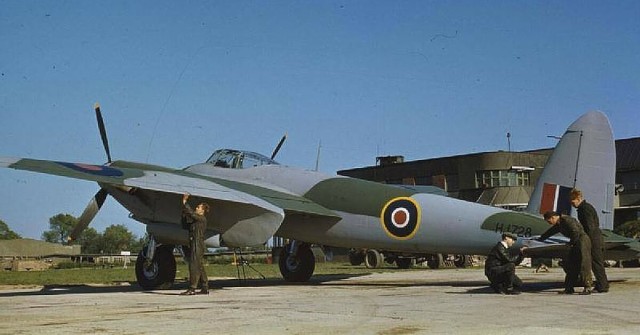
Undoubtedly – the best aircraft of its time. Many will of course argue that and that’s understandable, we all have our favourites. The De Havilland Mosquito was such a versatile fighter bomber. Nations tried to copy it but failed.
The
de Havilland Mosquito distinguished itself as both the worlds fastest
operational piston engine aircraft, and the most versatile combat
aircraft – built during World War II. The Mosquito excelled in a
variety of roles during World War II, including as day or night fighter,
strike fighter-bomber, photo-reconnaissance, pathfinder, intruder,
maritime strike, and surprisingly, a few BOAC mailplane variants flew
regular nightly services over Nazi-occupied Europe. It was conceived as a
fast twin engined day bomber that could outrun all contemporary
fighters.
The USA thought the P-38 could handle
the same role and the Germans tried with the Focke-Wulf Ta 154
Moskito. Several days after the attack on Pearl Harbor, the USAAF then
requested one airframe to evaluate on 12 December 1941, signifying that
the USAAF realised that they had entered the war without a fast
dual-purpose reconnaissance aircraft.
Scroll down for video
During
the Second World War, de Havilland was most noted for its Mosquito
fighter bomber, the famous ‘Wooden wonder’. This was developed privately
at Salisbury Hall, outside of Hatfield to avoid being targeted by
German bombers. The Hatfield site itself was camouflaged but was bombed
on 3 October 1940 by a Junkers Ju 88. Four bombs hit the ’94 shop’
building, killing 21, injuring 70 and disrupting work on the Mosquito.
Look at this stunning collection of colour images of a Mosquito at Hatfield.
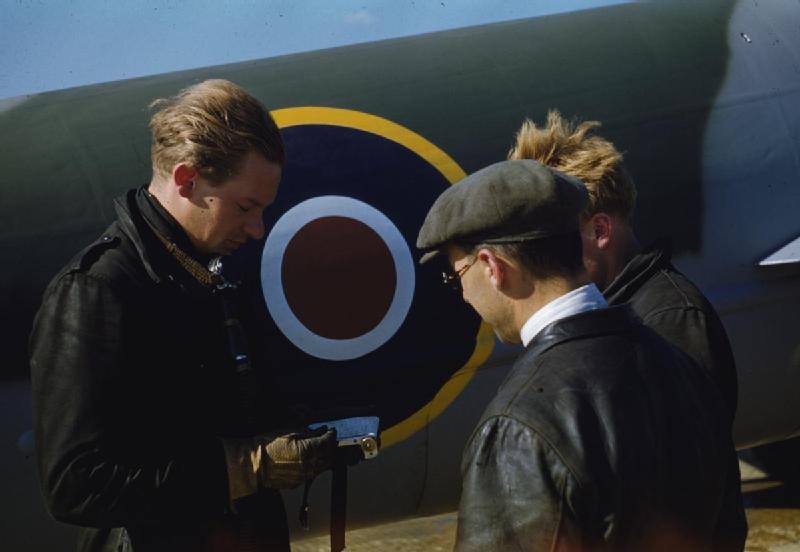
The De Havilland Mosquito was developed in the course of 1938-39 by a design team headed by R E Bishop in accordance with an original concept for a high-speed two-seat unarmed bomber of wooden construction proposed by Capt Geoffrey de Havilland.
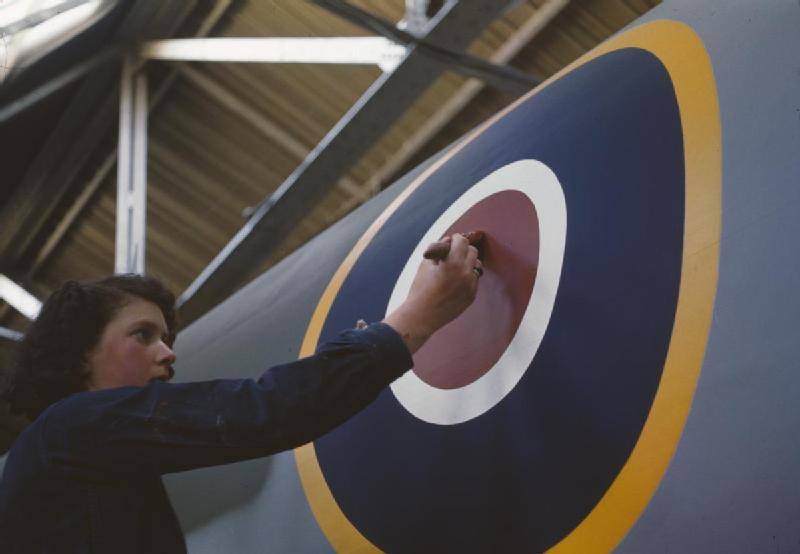
A young woman worker painting the fuselage roundel on a Mosquito aircraft at de Havilland’s factory at Hatfield in Hertfordshire, 1943.
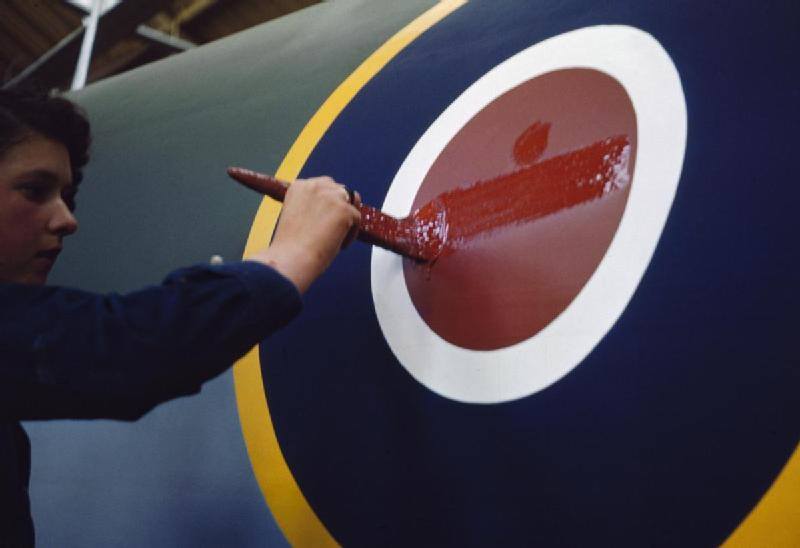
Very clear picture and such an iconic marking
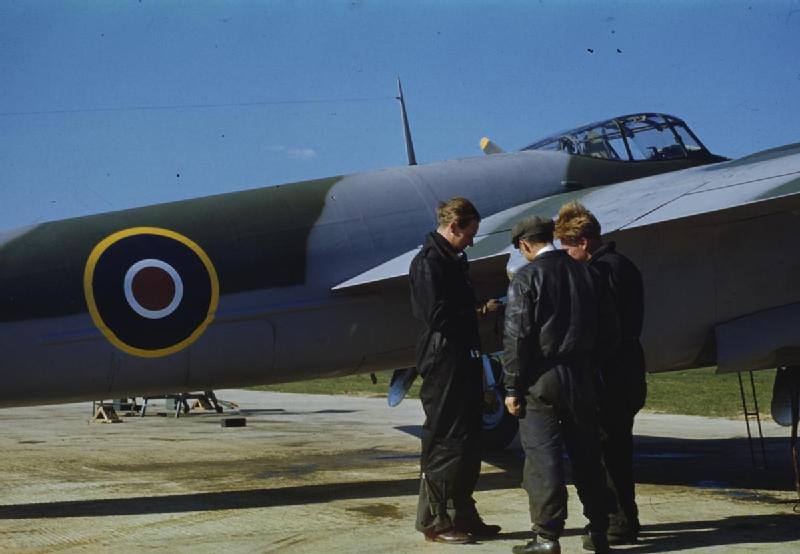
When production of the Mosquito began in 1941, it was one of the fastest operational aircraft in the world. Entering widespread service in 1942, the Mosquito was a high-speed, high-altitude photo-reconnaissance aircraft, continuing in this role throughout the war.
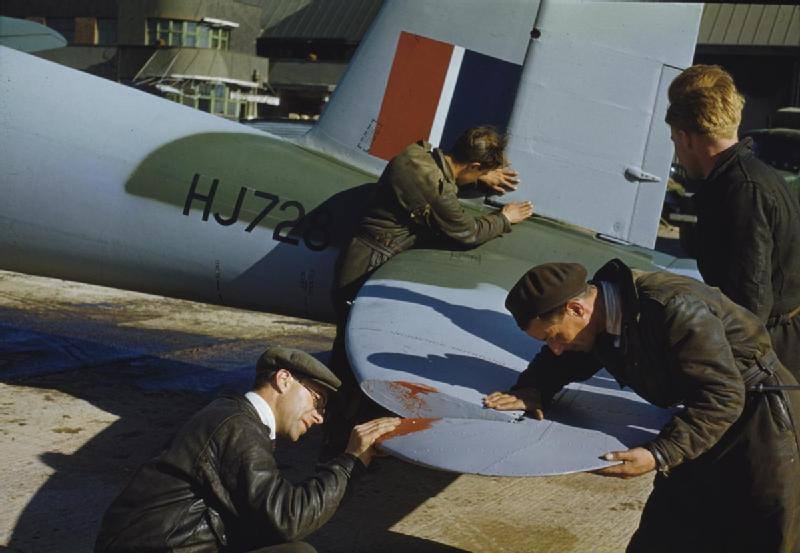
Fitters adjusting the tailplane flaps of Mosquito HJ728 before a test flight from Hatfield. Always had to wear ties at work
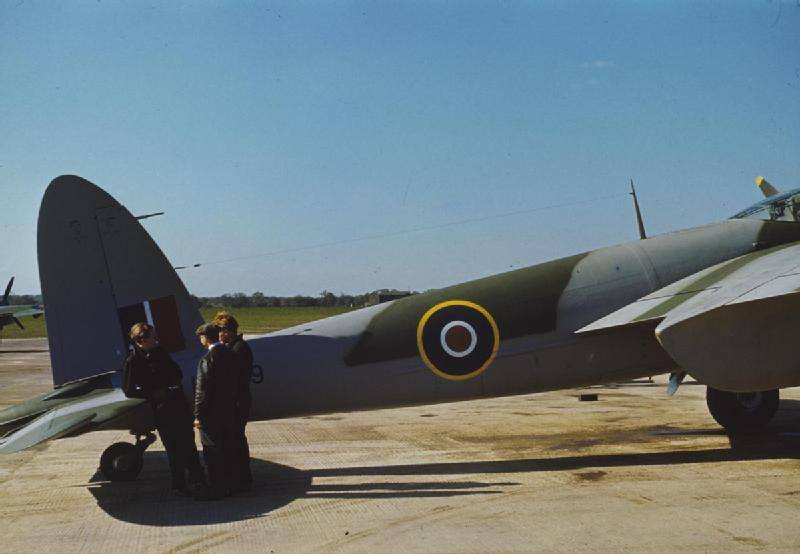
Test pilot leaning against the tail of the Mosquito he had just flown
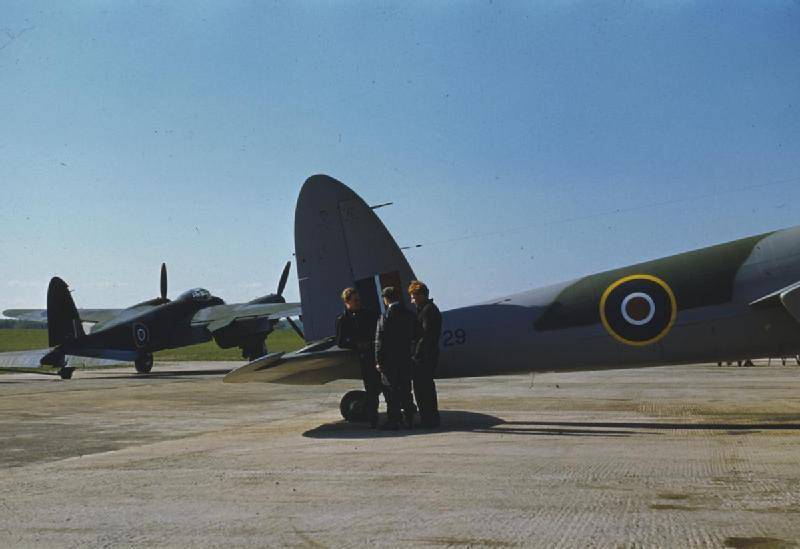
Wonder what happen to these two Mossie’s
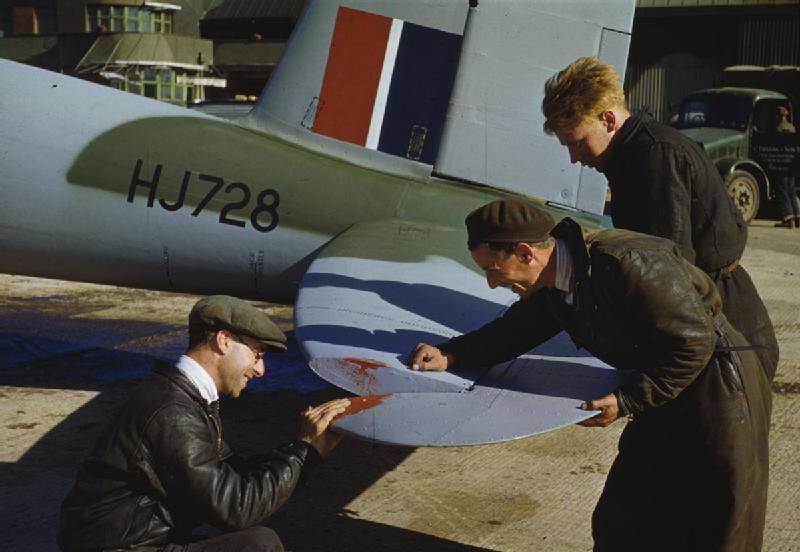
From late 1943, Mosquito bombers were formed into the Light Night Strike Force and used as pathfinders for RAF Bomber Command’s heavy-bomber raids.
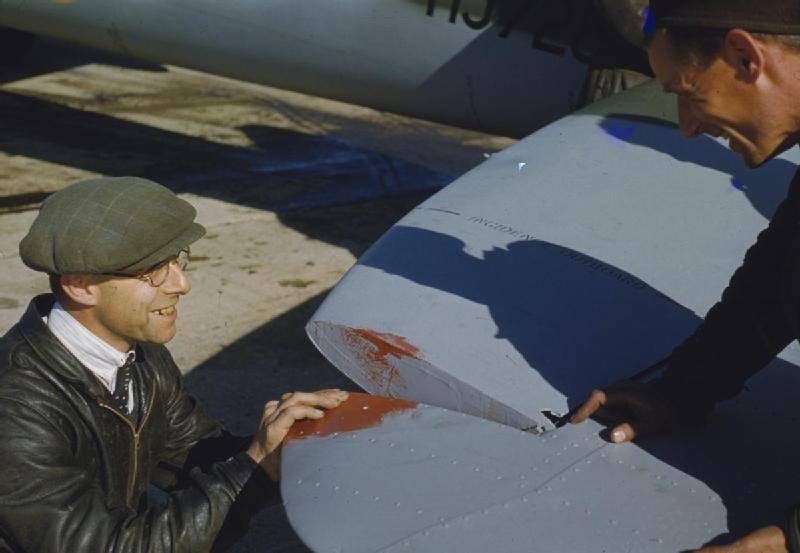
From mid-1942 to mid-1943, Mosquito bombers flew high-speed, medium or low-altitude missions against factories, railways and other pinpoint targets in Germany and German-occupied Europe
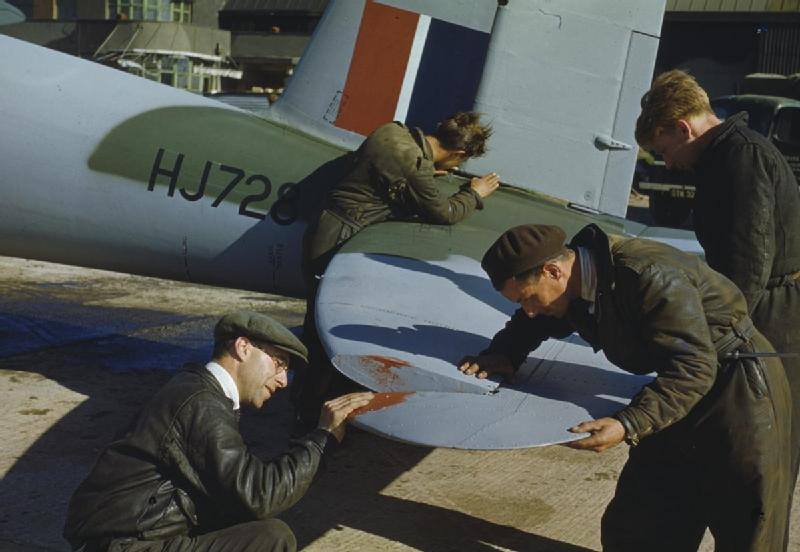
Fitters adjusting the tailplane flaps of Mosquito HJ728 before a test flight from Hatfield.
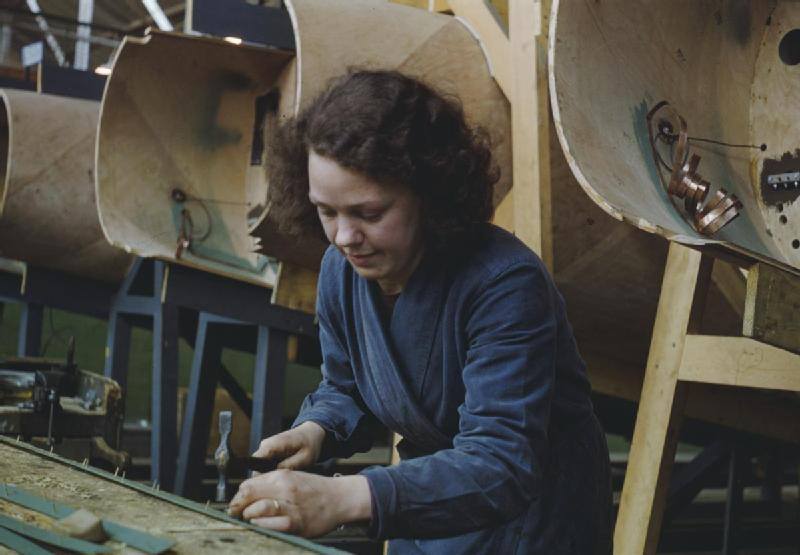
Mrs Judd prepares strips of wood to tack over gauze inside the hull of a Mosquito.
The Mosquito ended the war with the lowest loss rate of any aircraft in RAF Bomber Command service during WWII. The last RAF Mosquito to remain in operational service was retired in 1956. Total Mosquito production was 7,781 of which 6,710 were built during the war – De Havilland accounted for 5,007 aircraft built in three factories in the UK.
Mosquitos were also built by Airspeed Ltd, Percival Aircraft Company and Standard Motors. 1134 Canadian and 212 Australian built Mosquitos were also produced by the Commonwealth. The last Mosquito (NF Mk 38) was completed at Chester in November 1950.
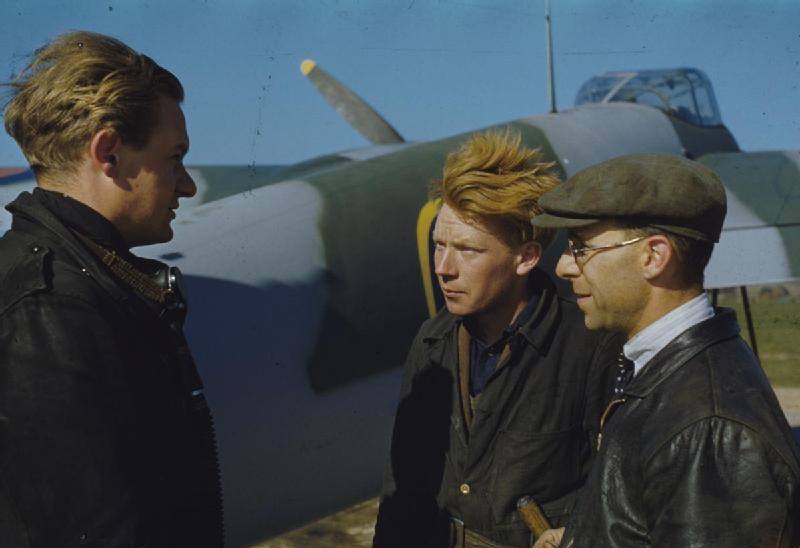
Test pilot John de Havilland
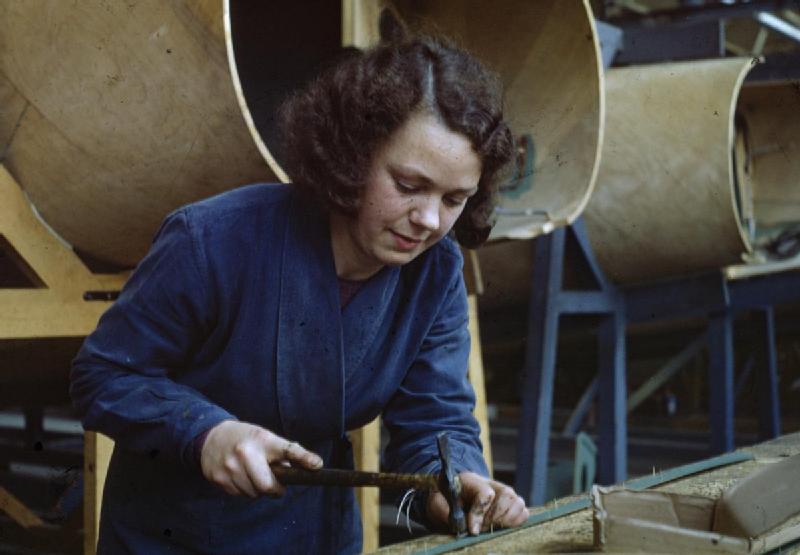
Mrs Judd working on the inside the hull of a Mosquito.
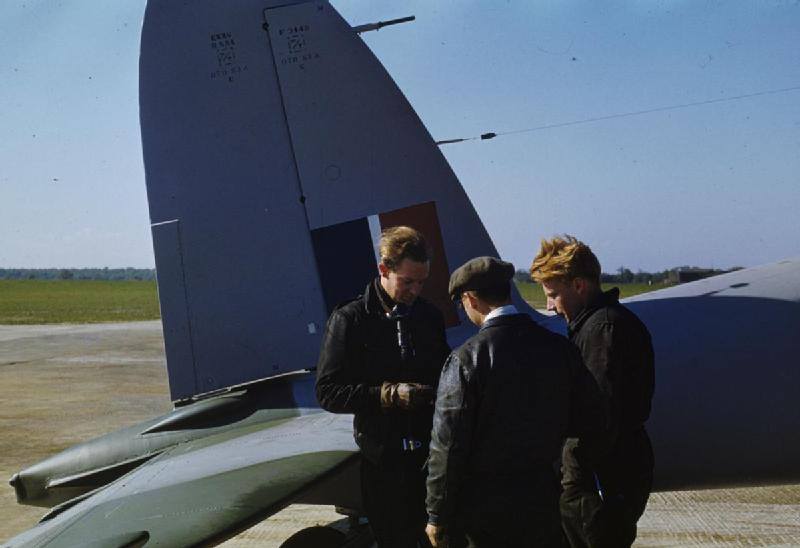
Test pilot John de Havilland checks his flight log with fitters at Hatfield after a test flight in a Mosquito.
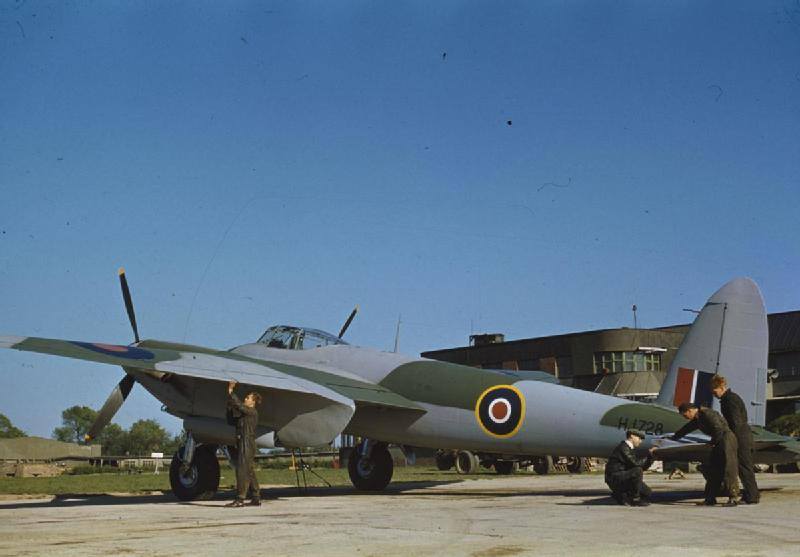
Building Mosquito Aircraft at the De Havilland Factory in Hatfield, 1943
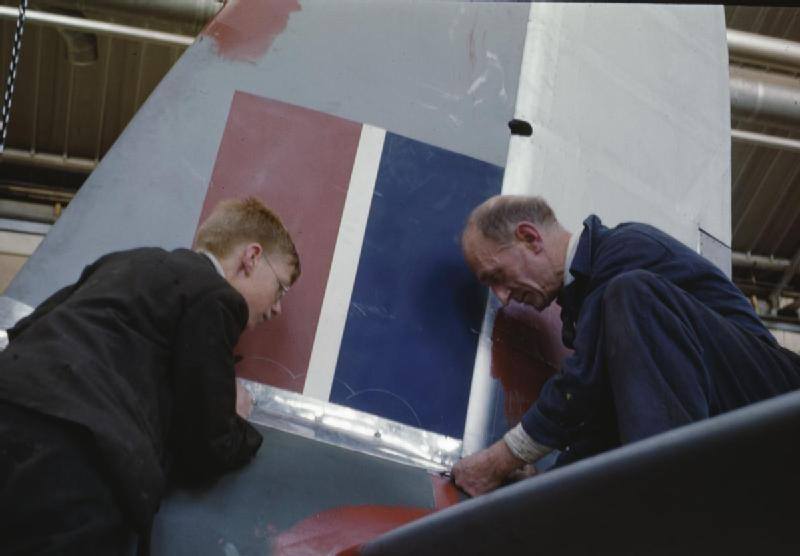
Ernest Oldham instructs Albert Austin in the method of setting the tailplane of a Mosquito.
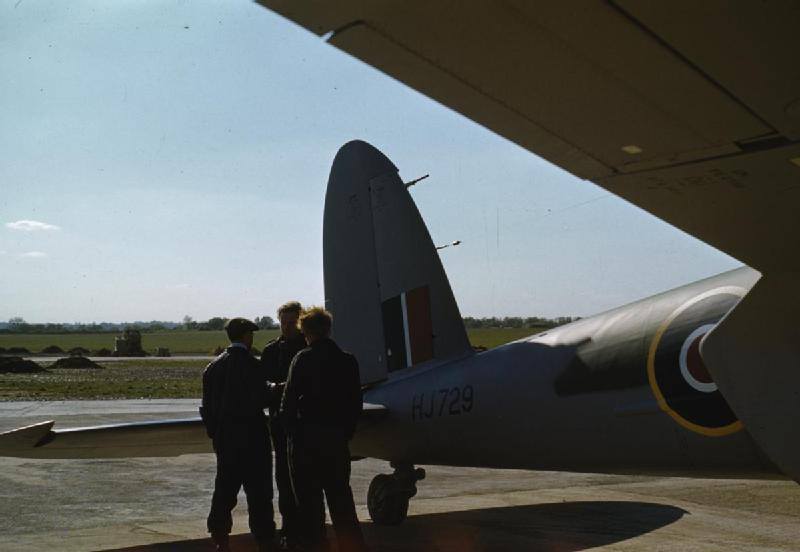
By the early-mid-1930s, de Havilland had a reputation for innovative high-speed aircraft with the DH.88 Comet racer. The later DH.91 Albatross airliner pioneered the composite wood construction that the Mosquito used.
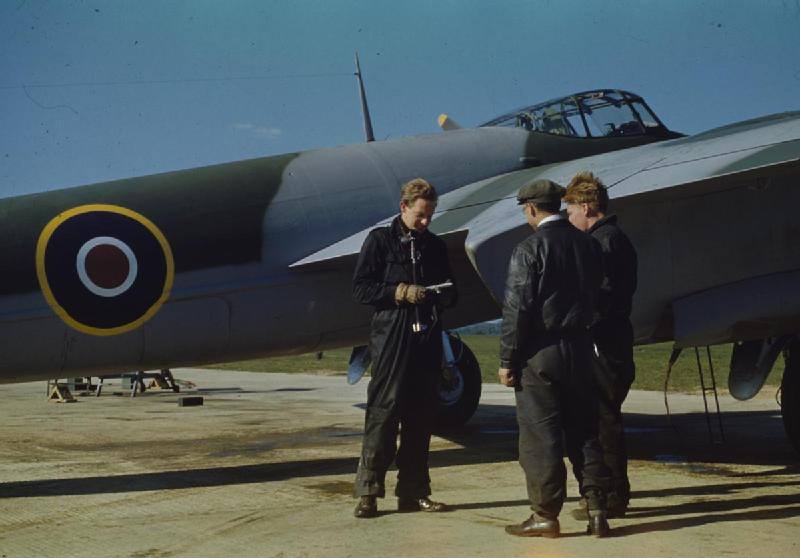
Test pilot John de Havilland checks his flight log with fitters at Hatfield. The Mossy wasn’t an easy bird to fly
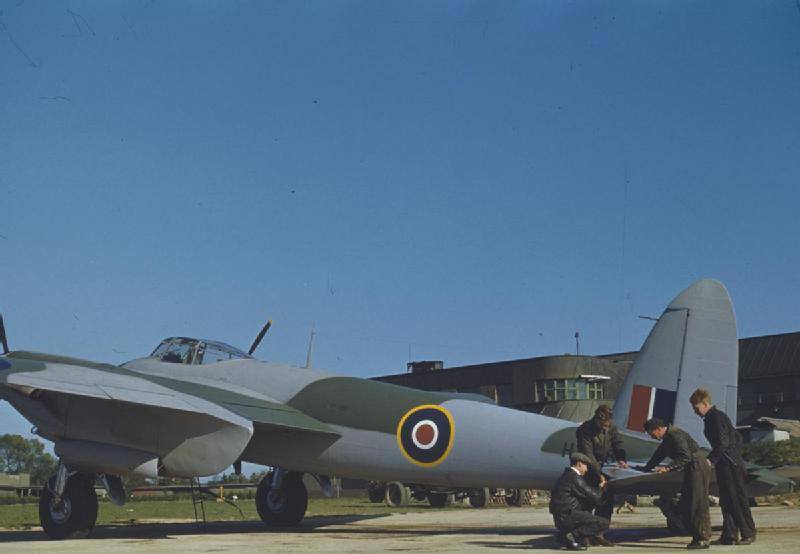
Fitters working on the tail of the Mossy

Building Mosquito Aircraft at the De Havilland Factory in Hatfield, 1943

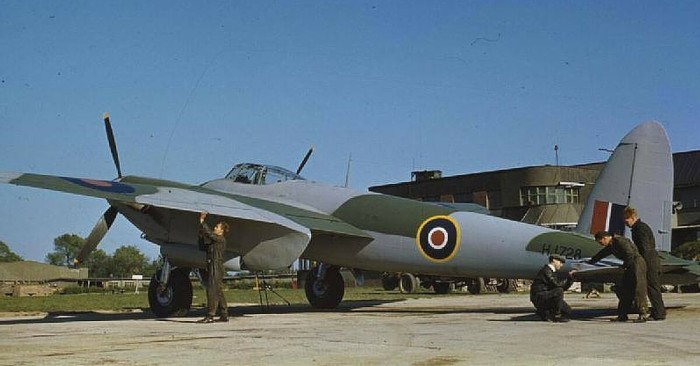
Δεν υπάρχουν σχόλια:
Δημοσίευση σχολίου